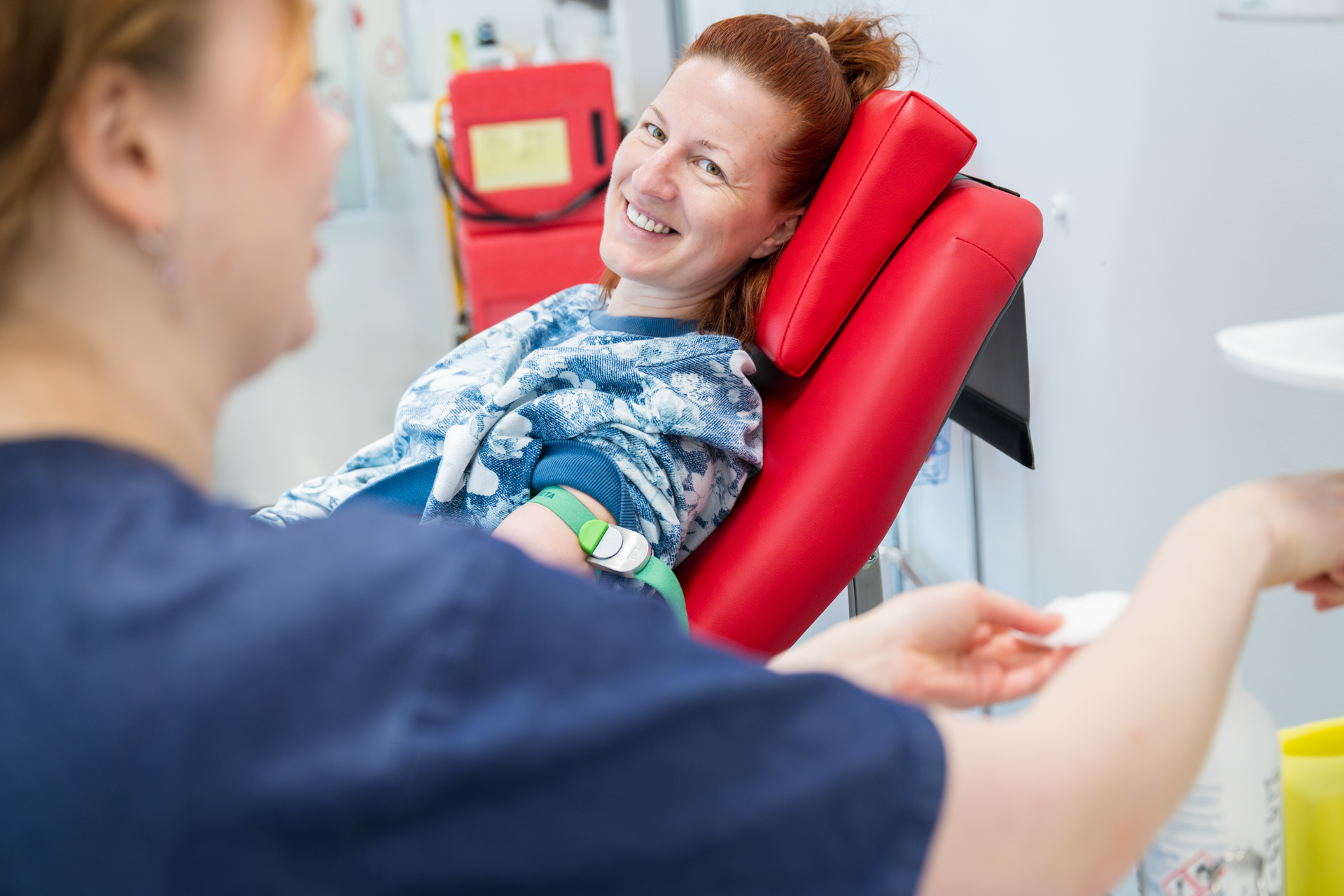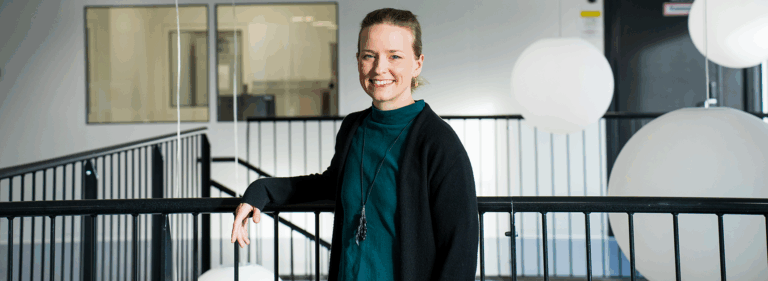Around the clock, every day
The Finnish Red Cross Blood Service provides service around the clock, because the need for life-saving blood components does not look at the clock.
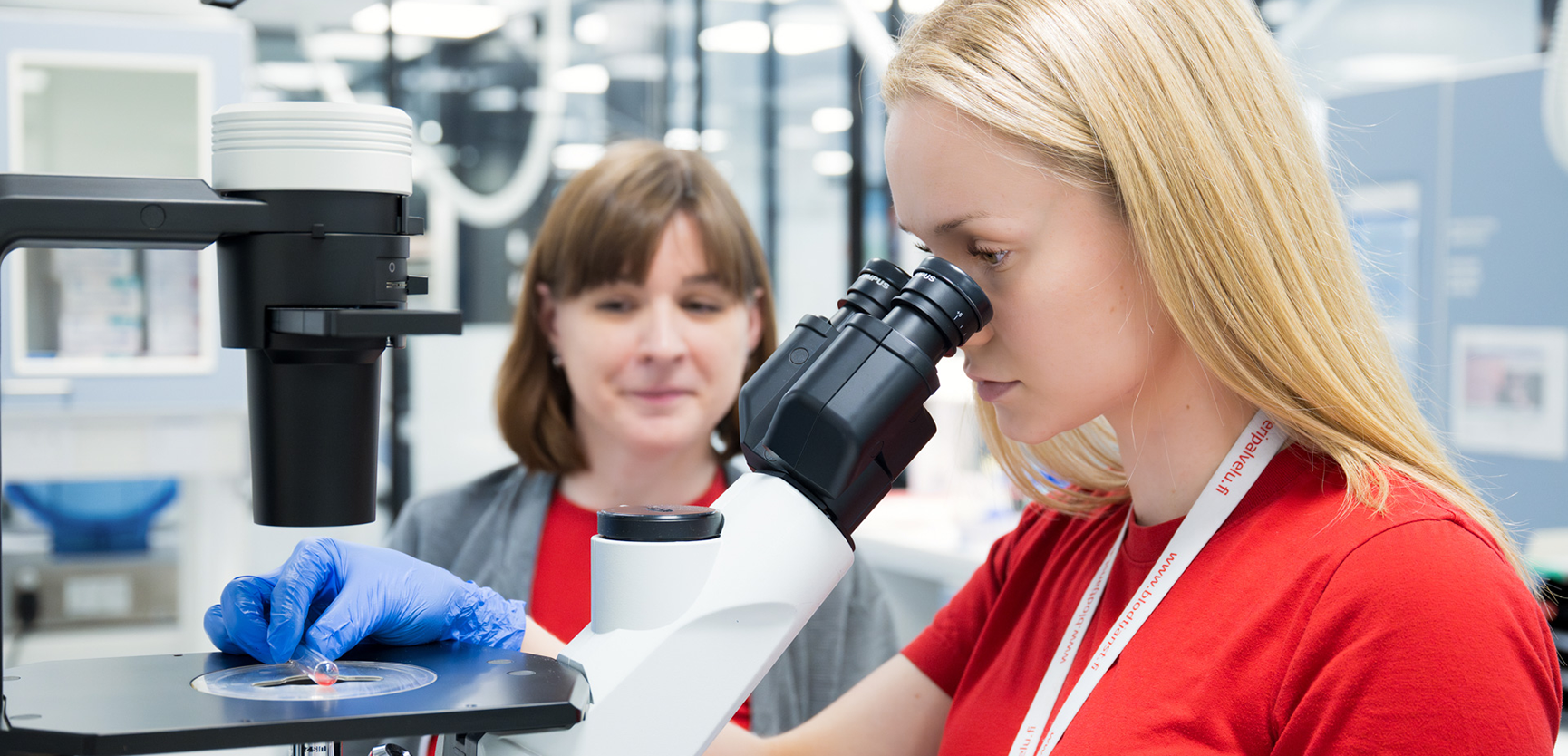
text Nina Pinjola / Mediafocus
pictures Matti Rajala
The article was published in the Red Cross magazine 03/2025.
A summer evening turns into a gray night at the main premises of the Blood Service in Veckal, Vantaa. While others are heading to bed, the lights shine brightly at the Blood Service. Work continues throughout the night. It is necessary, because surgical patients, mothers giving birth, or accident victims may need blood products at any time. Hospital blood centers also send patient samples for examination throughout the night.
– Patient samples arrive by taxi, bus, and air freight. At night, the most common mode of transport is taxi, says Juuli Hiltunen.
Hiltunen is a biomedical laboratory scientist and part of the Blood Service’s 24/7 team, which staffs the laboratory at night and also handles on-call duties at the order center and distribution.
During the night, samples collected during the previous day’s blood donations also arrive at Veckal. According to preliminary information, samples from a total of 759 donors from different parts of Finland are expected to arrive during this night shift.
– When someone donates blood somewhere in Finland one day, the laboratory results must be ready before 1 p.m. the next day, so that hospitals can receive a finished blood product for use. That’s why the examination starts already at night, says laboratory manager Sirpa Virolainen.
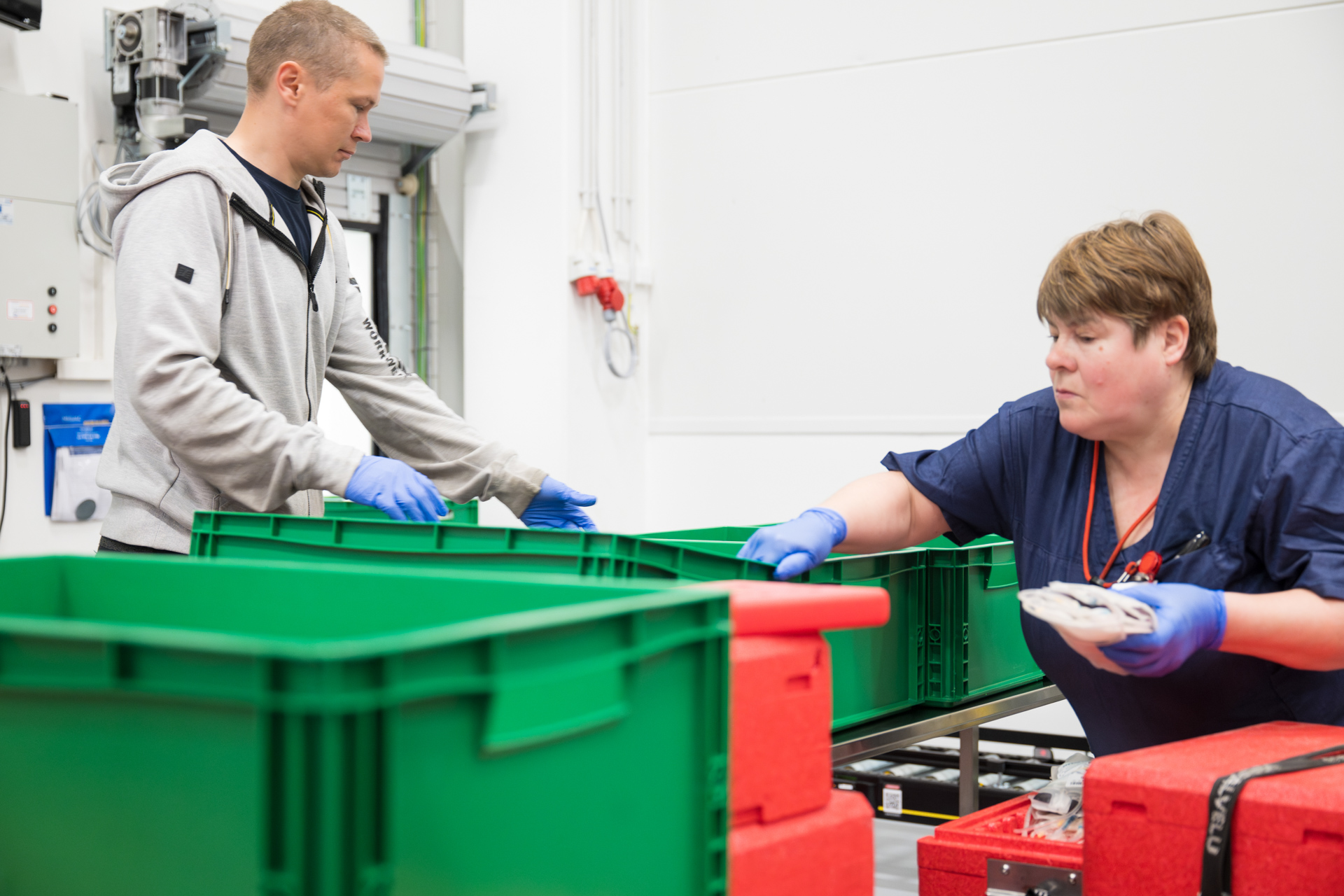
Specialized Expertise and Precision
At six o’clock, there is hustle and bustle in the warehouse at Veckal: the morning shift receives red transport boxes with donated blood.
– We start unpacking the boxes right after six o’clock. The blood is sorted in the order it was donated and then sent off on the conveyor belt to production, explains warehouse worker Tero Pesonen.
Every day, the warehouse receives 600–800 bags of whole blood and other blood products collected from donors. Storing blood requires specialized knowledge.
– In the storage boxes, the blood temperature must be kept at 17–24 degrees Celsius. Blood plasma must be frozen within a day of collection, says warehouse worker Riitta Karttunen as she sorts blood for production into green boxes.
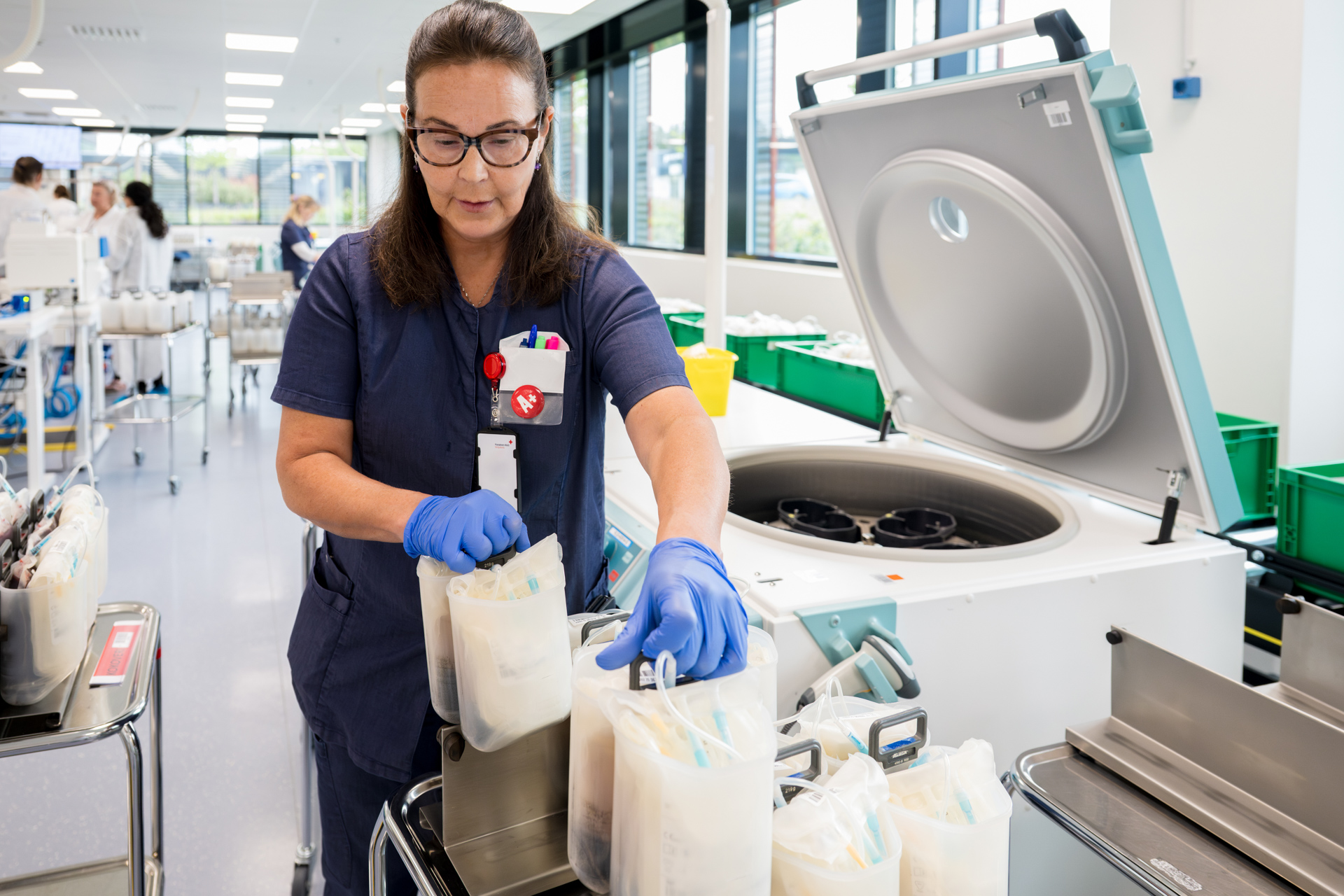
On the production side, work begins at half past six. A donor’s blood can help many patients, but several careful steps are required before the blood products are ready. First, the blood bags are centrifuged for 25 minutes.
– The centrifuge spins at 3,900 revolutions per minute. The centrifugal force causes the different components of the blood to separate, says component worker Marja Pajula.
– At the bottom are the red blood cells, in the middle are leukocytes and platelets (thrombocytes), and at the top is plasma, specifies production manager Sari Rope.
After centrifugation, Jenni Lainio distributes the different parts of the blood into their respective product bags. The red blood cells, also called erythrocytes, are mixed with a nutrient solution that increases shelf life and allows the product to be used for 35 days.
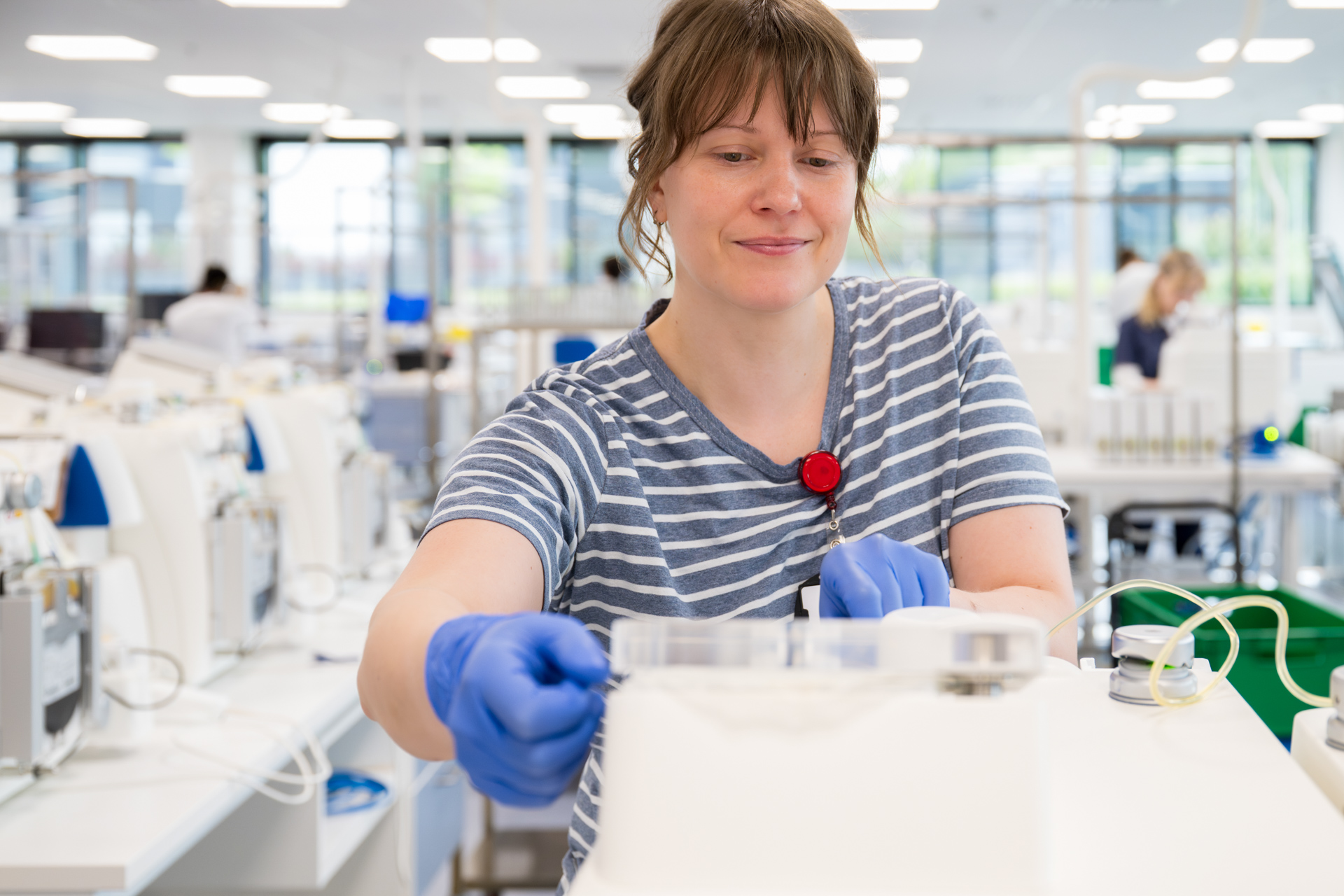
After half past seven, plasma bags begin to flow back to the warehouse along the conveyor belt. At this point, Riitta Karttunen places the bags one by one onto trays that resemble baking sheets, which are used for freezing the plasma. The cooling is done with liquid nitrogen at –70 degrees Celsius. After that, the plasma bags are stored in a freezer room at –30 degrees.
From the freezer room, the journey continues in due course to a pharmaceutical factory, where frozen plasma is used to manufacture medicines, for example, for antibody deficiency.
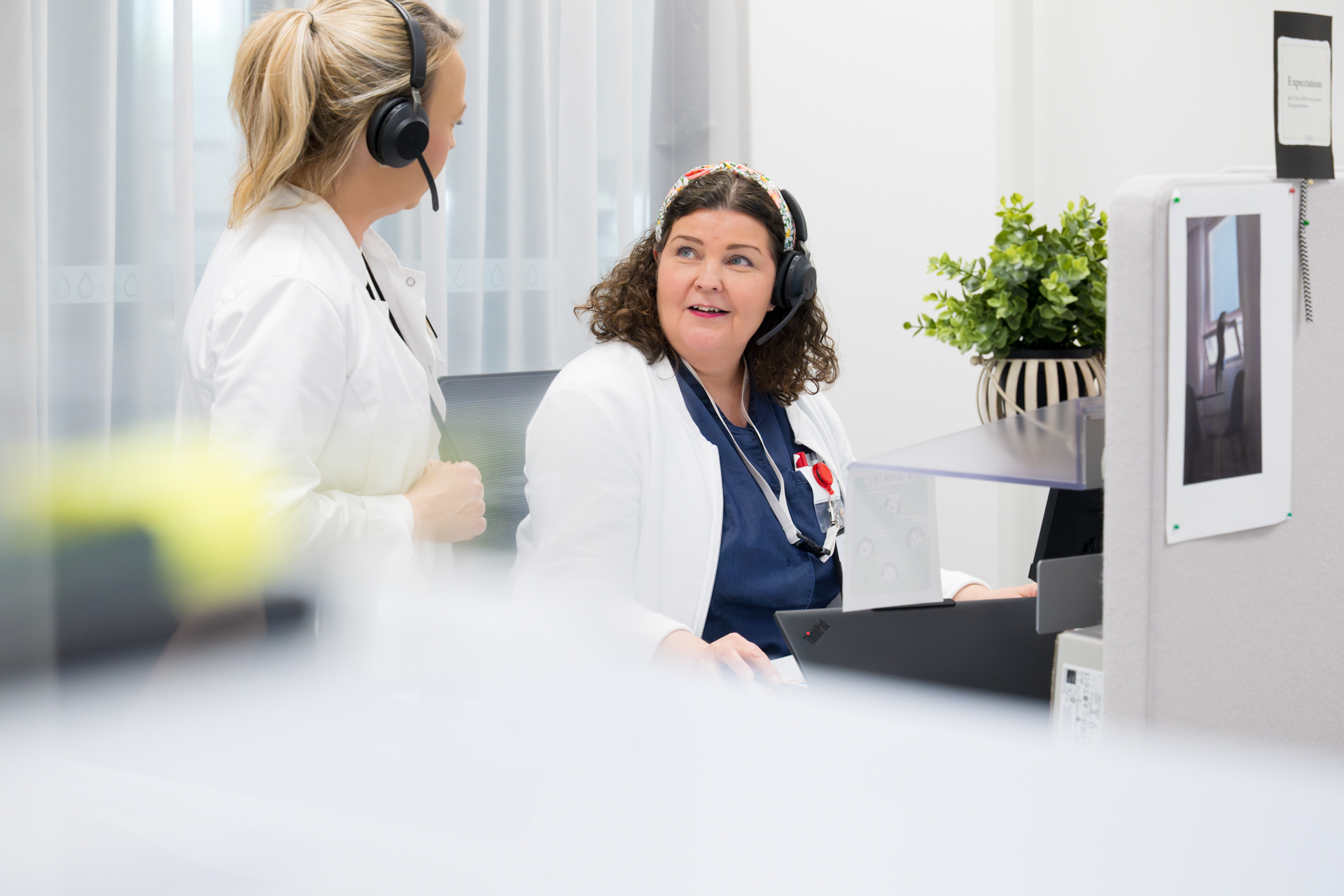
The Starting Point is Smooth Cooperation
The Blood Service’s order center receives all product orders from hospitals, hospital pharmacies, and researchers in Finland and forwards them to production. The center also coordinates all transportation.
Throughout the day, and often at night as well, shipments depart from Veckal to different parts of the country. In addition to basic components, many special products are manufactured according to patient needs. Most products are sent out as scheduled car transports, but taxis and air transport are also used.
– This morning we have already received 15 orders. One of them is a special order for red blood cells to be used in emergency care, that is, ambulances and helicopters, says Pauliina Lavio. The time is a quarter past nine.
The order center not only handles contacts with customers and production, but also with the Blood Service’s compatibility testing laboratory, virus department, and service unit. The latter, for example, is responsible for calling in donors with rare blood groups when blood of their group is needed.
– When an order for a special product comes in, the order center coordinates the manufacturing process and consults Blood Service doctors about schedules if necessary. The service operates around the clock, says Henna Nikulainen, who is responsible.
– It is especially important that the blood service chain works smoothly when patients need custom-made products, Lavio notes.
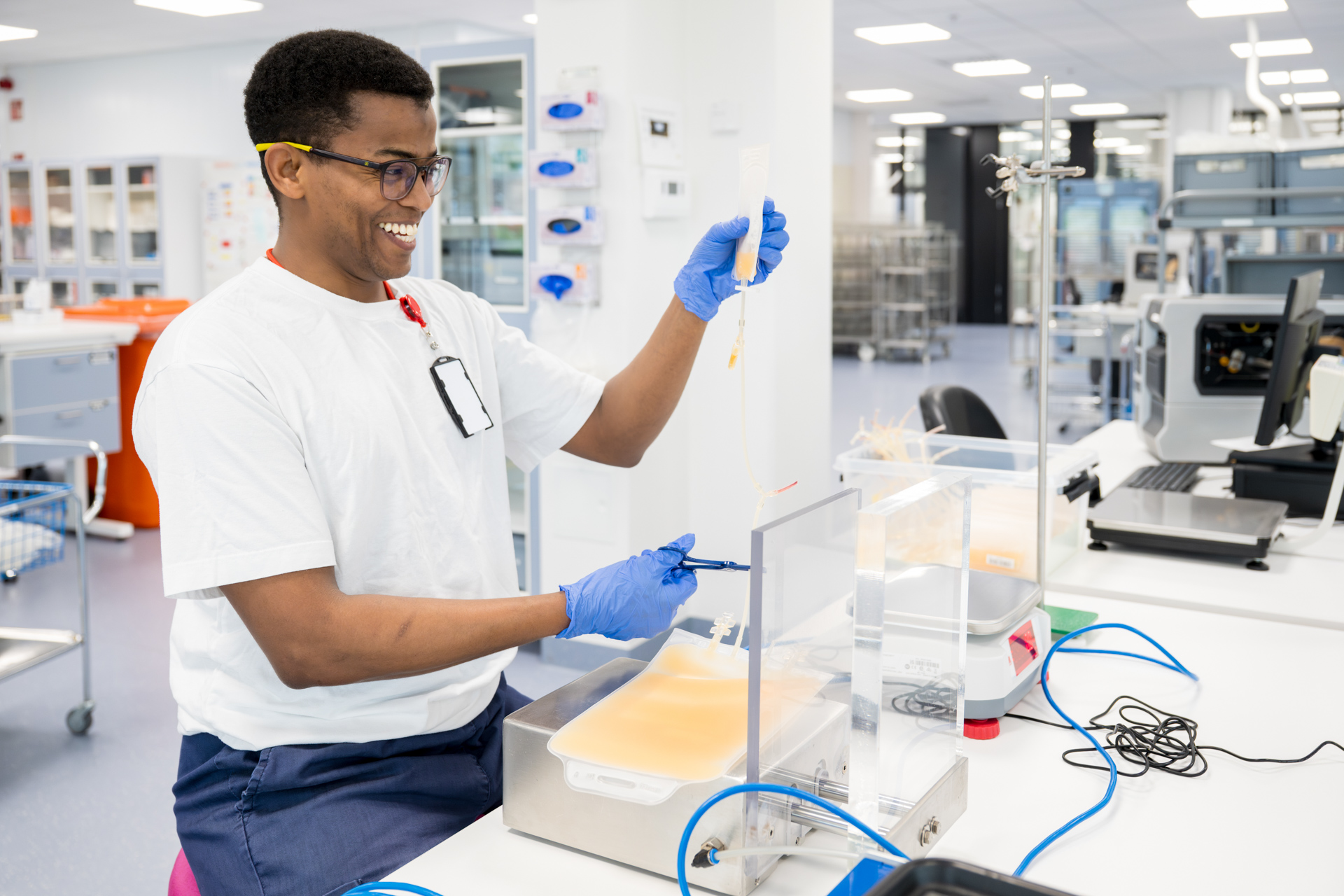
Bacterial Culturing Extends Usability
While the plasma bags return to storage, work continues elsewhere with red blood cells and platelets (thrombocytes). Surgical patients, accident victims, women giving birth, and prematurely born children are among those who may need red blood cells. Platelet products, in turn, are given to, for example, cancer patients and accident victims.
In production, white blood cells are filtered out from the red blood cells, and the erythrocyte product is packaged into a new bag. Once laboratory tests are complete, the bags receive labels and the finished erythrocyte products are moved to refrigerators and sorted by blood group. After ordering, they are sent out to hospitals.
In the production of platelet products, platelets from four donors with the same blood group are combined into one bag, a so-called pool bag. A storage solution is added to the bag, and then it is placed in a centrifuge to separate any remaining erythrocytes from the platelets. Finally, the platelets pass through a filter and are stored in bags for finished platelet products. The platelets also undergo bacterial culturing.
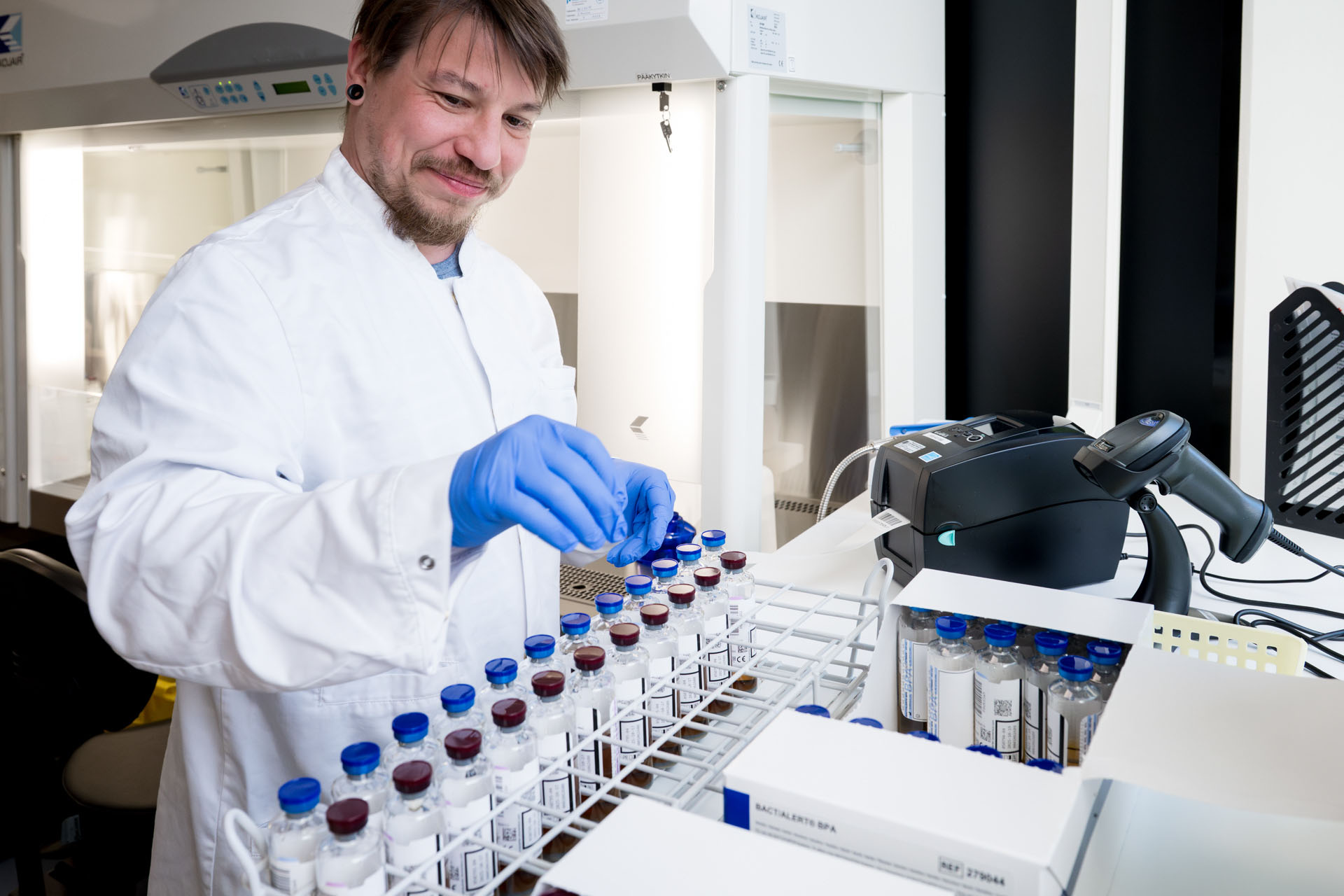
It All Begins with the Donor’s Gift
Despite all the expertise and technology required for blood service operations, the foundation is always the voluntary donors whose blood is the starting point for all blood products. The Blood Service organizes more than a thousand blood donation events across Finland every year. In addition, blood can be donated at ten permanent locations.
One of these is located just a stone’s throw from Veckal, in the Jumbo shopping center. The doors there opened at 11 a.m. today. At half past two, head nurse Sanna Koskinen and nurse Elina Mäntyharju describe the day as perfectly ordinary.
– The first and last hour are usually the busiest. Today we have 23 bookings, but there are always donors who come without an appointment, says Koskinen.
Croatian Iva Voncina comes to donate blood in Finland for the first time.
– The first time I donated blood was in 2002 in Croatia, at a blood donation event organized at my university. It went well, and after that I donated blood every four months, says Voncina.
At two o’clock, the phone rings at the Blood Service in Jumbo. A hospital needs IU erythrocyte products for an intrauterine blood transfusion, and the Blood Service’s support unit has already found three suitable donors for the purpose. One of them has promised to come and donate blood in Jumbo that same afternoon.
– Products of this type are not produced very often, maybe just under ten times a year, says nurse Sanna Koskinen.
After the blood donation in Jumbo closes at 6 p.m., whole blood, plasma, and samples that have been collected are gathered together and taken in carts for pickup and transport. A courier picks up the load later in the evening and drives it to Veckal, where the Blood Service’s 24/7 team receives it.
Every day, the wonderful journey of donated blood towards medicines for patients begins anew.
